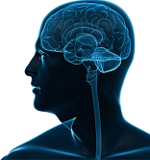Auditory Response, a Promising New Objective Test for Concussion
In recent years a great deal of research has been done to identify an objective “biomarker” of concussion. As reported in this blog, some promise has been found in blood biomarkers (measuring plasma tau protein levels) and neuroimaging, such as the DTI MRI sequence. Unfortunately, these approaches are invasive and/or expensive and are not always a reliable indicator of concussion and concussion recovery. As reported in our November 27, 2016 blog post, until now, one of the most promising concussion screening tools was a series of vision tests endorsed by the Department of Defense.
Scientists at Northwestern University have now found a related, and what appears to be an even more precise and accurate tool, a measure of the brain’s electrophysiological response to sound.
The research was published online on December 22, 2016 in the journal Nature, Scientific Reports. Like other sensory processing, processing sound is very complex and involves many different parts of the brain. As explained by the authors, sound processing is
“one of the most computationally-demanding tasks the nervous system has to perform, relying on the exquisite timing found in the auditory system, which responds to inputs more than one thousand times more quickly than photoreceptors in the visual system.”
“Thus,” the authors explain, “the auditory system may be sensitive to neurological insults that disrupt the microsecond-level temporal resolution.”
This thesis was supported by the research results. Lead author Nina Kraus and her colleagues placed three simple sensors on children’s heads to measure the “frequency following response,” the brain’s electrophysiological response to sound (a measure of sustained neural activity.) This is an objective measure, not capable of being controlled by the subject. With this measure they were able successfully identify 90 percent of children with concussions and 95 percent of children in the control group who did not have concussions. Children who sustained concussions had on average a 35 percent smaller neural response to pitch. Within the concussion group, children reporting the greatest symptoms (like headache, difficulty concentrating, drowsiness, and photosensitivity) had the smallest neural response to pitch.
As children recovered from these concussion symptoms, their ability to process pitch returned to normal. In other words this appeared to be an effective measure of not only the existence of concussion but also of concussion recovery.
Needless to say, this research has tremendous clinical and forensic potential.

